32 tips to get into cycling - even if you're a complete beginner
Cycling is one of the most popular sports in the world. Here's how to get started as a total beginner, with tips and tricks for your bike and ride


Cycling is one of the most popular sports in the world, with over one billion bicycles in use worldwide. So, if you're looking to pick it up as a hobby, you're not the only one.
Just like running, cycling comes in many forms. Road cycling, gravel cycling, mountain biking, track cycling, and touring are all types of riding you can enjoy with just a bike, some good kit, and know-how.
To make the transition from two legs to two wheels easier, we reveal what you need to know to get into cycling - from tips on buying your first bike to what to eat on a ride.
Buy a secondhand bike

When starting out, there's no need to dig deep into your pockets and buy an expensive bike. A simple second-hand bike from a local bike shop or an online marketplace is more than enough to get going.
Of course, it depends on the type of cycling you want to do - don't buy a cheap secondhand road bike if your ambitions lie in mountain biking. But if you're just looking to ride with friends and family on the roads, or cycle to work, then a basic bike with enough gears to see you up a hill and quality brakes will be enough.
Komoot cycling app | View at Komoot
One of the best cycling apps we've tried, Komoot allows you to find and follow pre-set routes in your local area, plan routes on your phone or laptop, and record routes you take spontaneously so you can save them for next time and share them with others. It's free to download, but you'll need to upgrade to premium (£59.99) to access extra features, like multi-trip planning.
Buy some padded shorts

If you're planning to ride for more than half an hour at a time, it's worth investing in some padded shorts. These shorts, available from all good cycling retailers, have a pad in the bottom of the shorts called a 'chamois' that limits saddle discomfort during your ride.
You can buy shorts with a chamois in bib form too - where two straps, much like braces, are built into the shorts to hold them up and smooth out the contours of your body. These tend to be more comfortable than standard cycling shorts as well.
Sign up to our free daily email for the latest royal and entertainment news, interesting opinion, expert advice on styling and beauty trends, and no-nonsense guides to the health and wellness questions you want answered.
Ride in your local area

You'll want to stay local at least to begin with. Straying far from home on your bike might sound like an adventure, but it stops being fun very quickly when you're hours away from home with a puncture - and you haven't yet learnt how to fix one.
Staying in your local area can also help you get confident with the ins and outs of your new bike, encourage you to find more to explore around you, and improve your road confidence.
Schedule a bike fit

A bike fit is a service that many professional bike shops offer riders. It's a process that involves adjusting a bike to suit a rider's abilities, goals, and foot positioning to offer more comfort, better performance, and (hopefully) a lower risk of injury.
The price will depend on your individual bike set up, where you have the bike fit done, and what services you opt for, but they typically start from about £100.
Always wear a helmet

Always wear a helmet when you're on your bike, no matter if you're only going 10 minutes down the road or cycling on bike and pedestrian-only paths. This should be obvious - but we've all seen people cycling without one on.
A 2016 study found that wearing a bike helmet can reduce your risk of a serious head injury by almost 70% - and fatal head injury by as much as 65%. It's the difference between life and death in many cases.
Mount your phone

If you're planning to go out of your usual area on your bike, the safest way to get directions is via your phone on a bike mount. A bike mount sits on the handlebars or the handlebar stem and securely holds your phone so you can view your map and directions at a glance - much like GPS in a car.
This is much safer than having the directions fed through earphones, for example, as this can block out the sound of the traffic and potential hazards.
Be safe, be seen

Be safe, be seen - wear high-visibility clothing at all times when you're on your bike. This isn't just for your safety around cars. Wearing clothing that's bright means pedestrians can see you coming as well.
You don't even have to go with fluorescent clothing to be seen in darker light these days either. Silver-grey strips on regular cycling clothing or a jacket made exclusively of this shiny, ever so slightly glittery silver-grey material and colour work just as well and are a little more low-key in the daylight.
Plan your route

The makings of a good bike route are in the planning. Before you head out, have a route in mind - even if it's just a few laps of your local area. This will help improve your motivation to get out and ride (even on the days when the weather isn't so great).
You'll also be able to plan out convenience stops for the bathroom, food, drink, coffee etc, all of which make cycling just that little bit more enjoyable.
Eat before you ride

While there is a lot of debate around eating before or after a workout, when it comes to women, 'fed' workouts (i.e. where you eat before you exercise) have been found to be considerably more effective and essentially better for the body
This goes for cycling too and other cardio workouts especially - not having enough fuel in the tank isn't going to get you very far.
Pack your snack pack

Your snack pack can tuck in the back of your cycling jersey or in the bag on the front of your bike - that's up to you. But in your pack should be plenty of delicious, carbohydrate-rich snacks to fuel you during your ride.
This can be quick carbs if you're only going for a short distance or are planning on cycling very fast - or complex carbohydrates, which release energy slowly over a longer period of time. Complex carbohydrates include foods like porridge, rice, and sweet potato.
Remember to hydrate

As with all sports, hydration is key in cycling. Naturally it depends on the type of riding you're doing and your own personal needs, but many people aim to drink at least 120ml every 20 minutes.
If you're not used to drinking this much water, you could also pre-load your body with hydration by drinking plenty of water the night before your ride and water before you clip in and head out the door.
In hot weather, or if you're not used to cycling, you might need a little more. Having electrolytes in your water can be helpful for this as they come in tablet form and contain the minerals you need to stay properly hydrated.
Take pictures

Riding is supposed to be fun! Soak up the experience by snapping a few photos during your ride. They could be of yourself on your bike, of the scenery, of your friends riding with you, for instance.
If you do take your phone or camera out while you're on the move though, remember to stay safe and check around you first for other cyclist, potential pedestrian hazards, and cars.
Plan a coffee stop
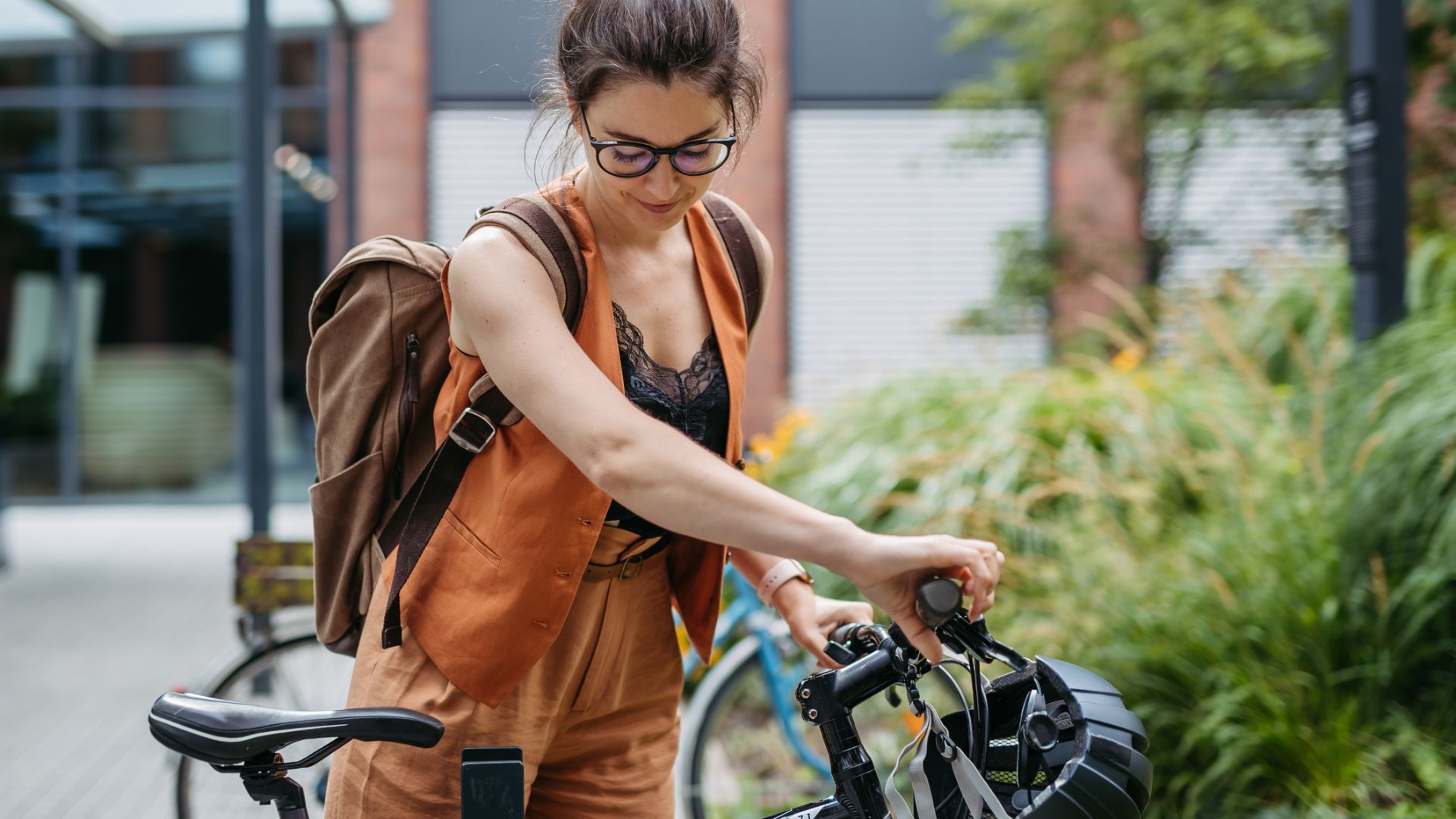
One of my favourite parts of any bike ride is the stop for coffee - and a pastry, of course. Factor these into your route and I promise, your ride will become a lot more enjoyable.
These stops can also be the perfect opportunity to use the bathroom in privacy, top up your water bottle, and stock up on snacks.
Many cycling cafes around the UK also serve as community hubs - places where cyclists and cycling groups can gather together, so this is a good place to make friends who ride as well.
Find a friend
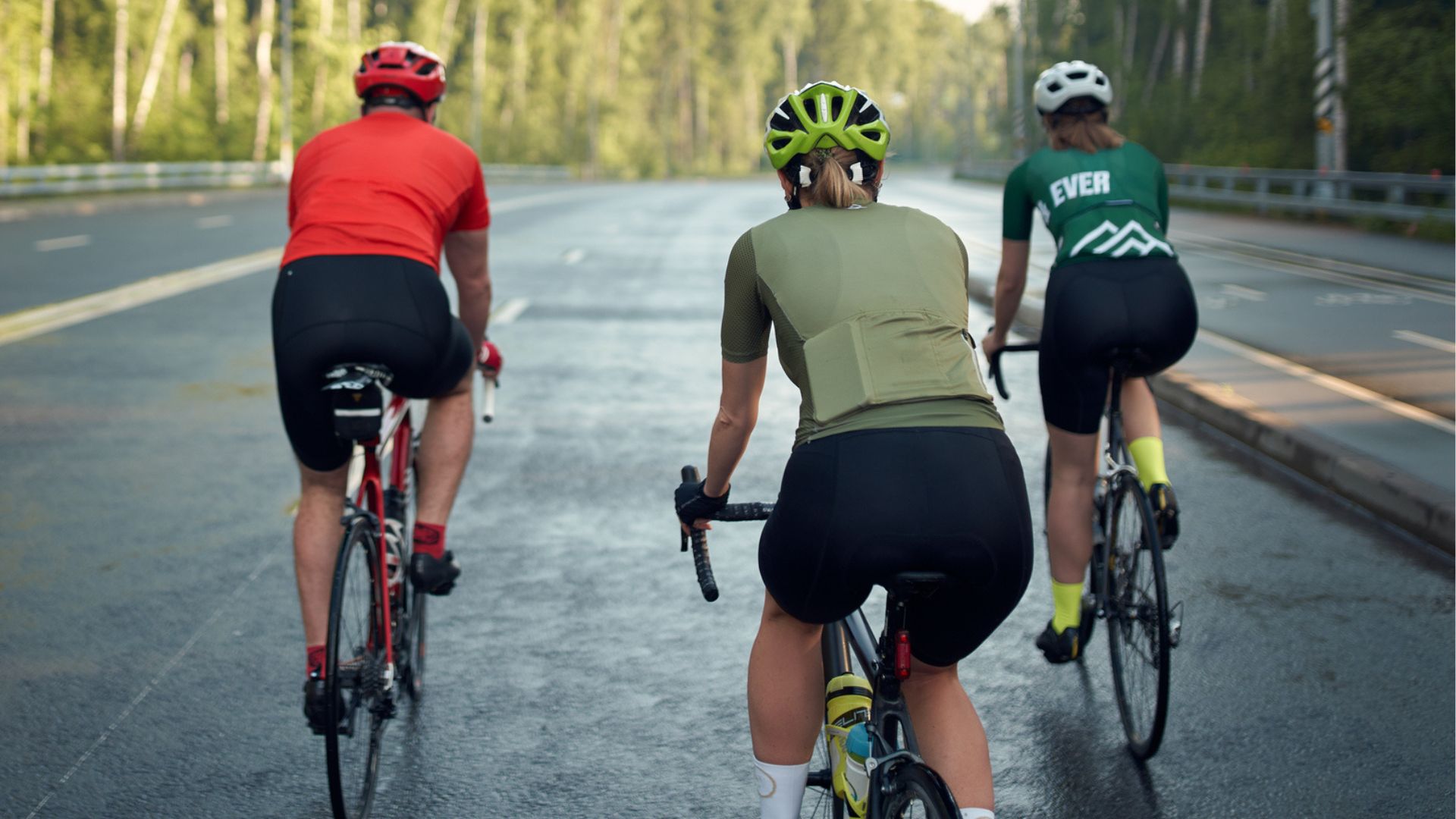
Some people prefer cycling on their own, but if you've always been someone who feels more motivated or prefers exercising with someone else for the company, find a friend who rides.
When you buy your bike and get comfortable on it, start telling your friends and family about your new-found hobby. Given that cycling is one of the most popular sports and recreational activities in the world, you're bound to know someone who loves it too.
Warm up before your ride

As with any exercise, it's important to warm up your muscles and get ready to move with some stretches. Since the lower body is used most during cycling, it makes the most sense to target your legs, glutes (buttocks), and lower back with stretches. However, you should also stretch out your upper back, arms and core before heading out for a ride as you'll use these muscles too.
Doing these stretches before jumping on the bike will help to prevent injury.
Remember to stretch after your ride

Just as it's important to warm up before your ride, stretching out your legs, arms, and core, it's important to take the time to 'cool down' and stretch after your ride. If you've been on the move for hours, suddenly stopping exercise for an extended period can lead to more lactic acid build-up in the legs and uncomfortable symptoms related to blood pooling.
Stretch out your entire body - including your wrists. These are an underrated body part when it comes to cycling and depending on your bike set-up, can get quite a hammering on a bike ride.
Pick up some chamois creme

Chamois creme is a specialist product designed to reduce friction and prevent chafing during a ride. Hours spent sitting down on a bike seat can be uncomfortable on the skin and leave you with small spots or pimples due to lack of airflow between the clothing and skin in the chamois area of the bike shorts.
This cream can prevent this and offer comfort while you're riding.
Get a good bike lock

If you're planning on leaving your bike anywhere, invest in a good bike lock. A D-lock is one of the better types. As the name suggests these are locks shaped like a 'D' and normally made of steel, making them harder to cut through than looks with a flexible wire component.
The D-lock should secure your bike frame and the back wheel, which costs the most should you need to replace it, and locks made up of steel wires with a silicone or plastic casing should only be used in addition to the D-lock to secure the front wheel.
Shop the extras
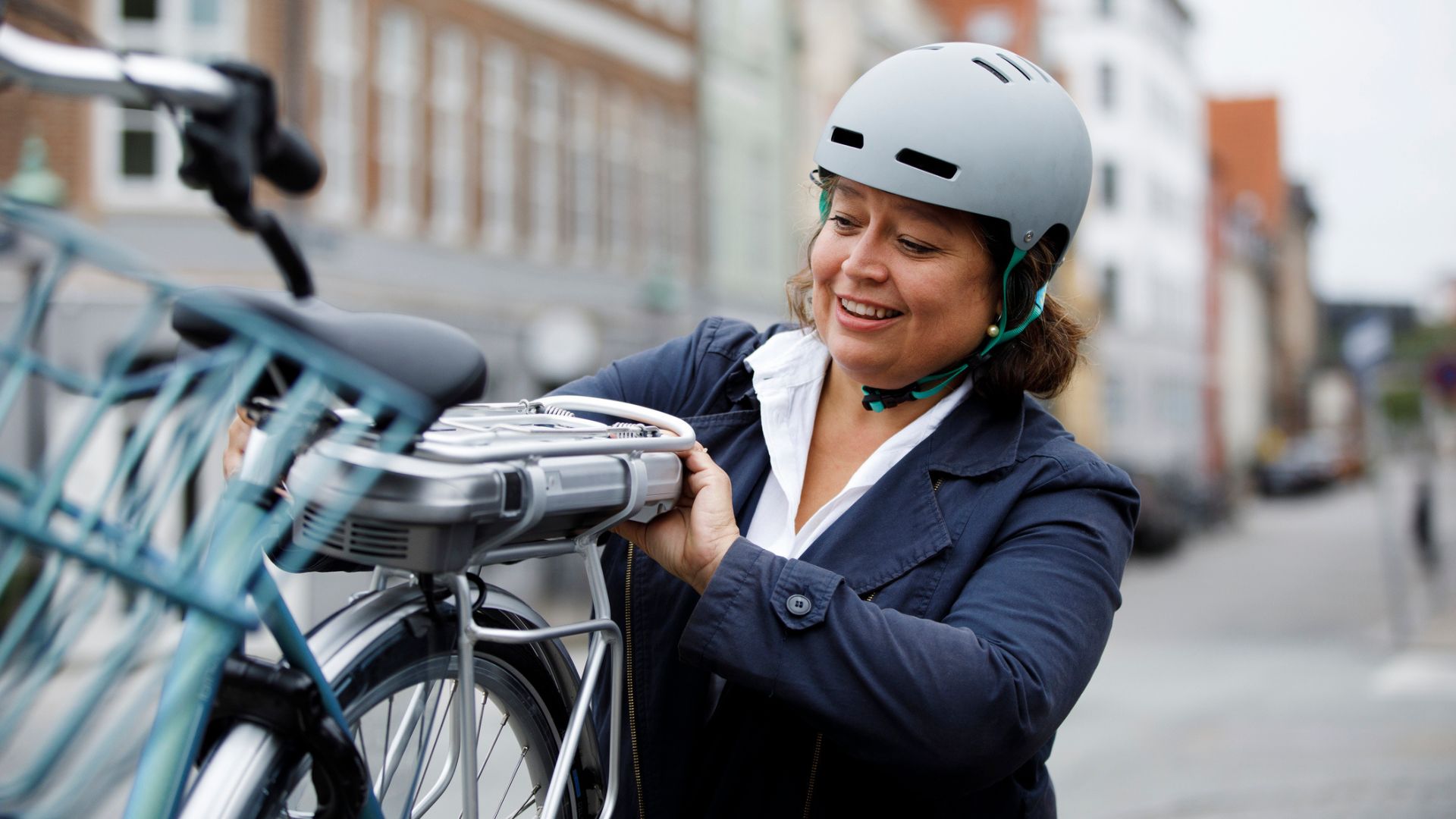
One of the best parts of getting into cycling is unfortunately the most expensive - and that's shopping for all the extras you can get for your bike. You might decide that you want to commute for work. In which case, you'll likely need a front or back rack to store your bags.
You might want to invest in some better lights if you plan to be riding at night, or a water bottle cage to hold fluids for longer-distance rides.
All these accessories make spending time on the bike more enjoyable so think about what you could need.
Find your cycling kit style

Like any sport, there are some big name brands linked to cycling. These brands sell cycling kit - like bike shorts, zip-up jerseys, socks, shoes with cleats, bags for your bike and so much more.
Before investing in a full head-to-toe cycling kit from one brand, make sure you do your research and shop around the market. Some brands favour practicality over style, while it's the opposite way round for others. Some will offer bright patterns and designs, while others favour a more discreet, muted colourway.
There are so many cycling brands out there these days, you'll have an afternoon well spent doing your research.
Upgrade your bike
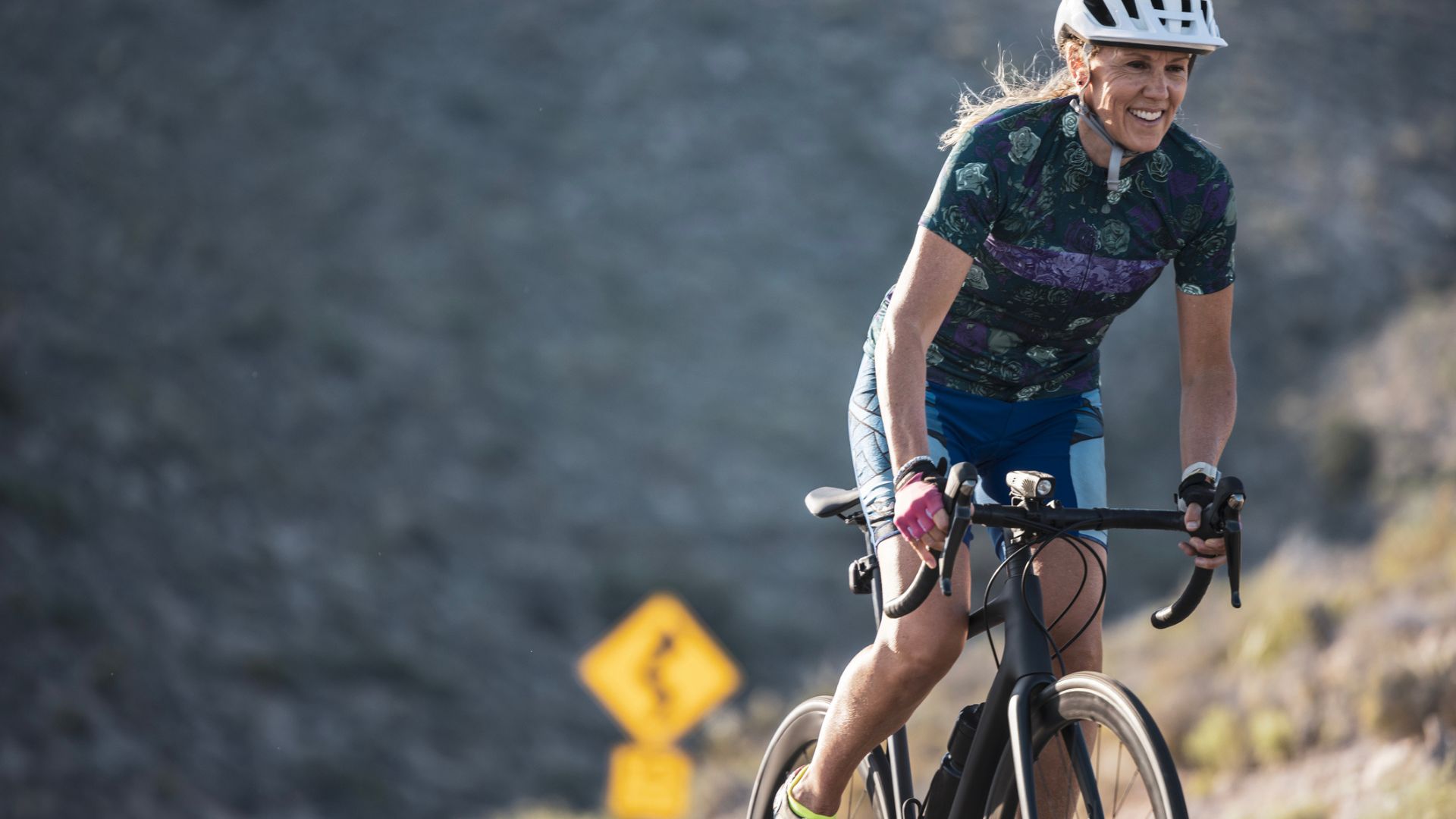
If you decide to get into cycling for more than just practicality reasons or a quick trip to the corner shop, you might decide you want to level up your bike. For example, if you find yourself doing long rides at the weekend and you want a bike that can keep up with your new-found hobby.
When thinking about what kind of bike you want, consider the terrain you'll be cycling on, what you'll be carrying, and how long you're intending to ride for. This will determine what material your bike should be made from, what gears and brakes you have, and how heavy your bike should be.
Find a community

Millions of people cycle every day. In 2022, it was estimated that 41 million people - that's 8% of the population - used a bike as transportation in Europe. So, find a community of people in that 41 million to ride with if you're looking to get into your new hobby with new friends.
Check out cycling groups in your local area or find a community online through social media to make the most of cycling.
Explore different types of cycling

There are so many different types of cycling. Road cycling, bike packing, track cycling, mountain biking, gravel cycling, touring, BMX, the list goes on. So, if you try one type of cycling and find it isn't for you, don't be afraid to dip your toe into other types.
This is also where renting a bike, as opposed to buying one immediately, can come in handy. If you decide that road cycling isn't for you and want to try mountain biking, you'll need a totally different type of bike.
Take the sport indoors
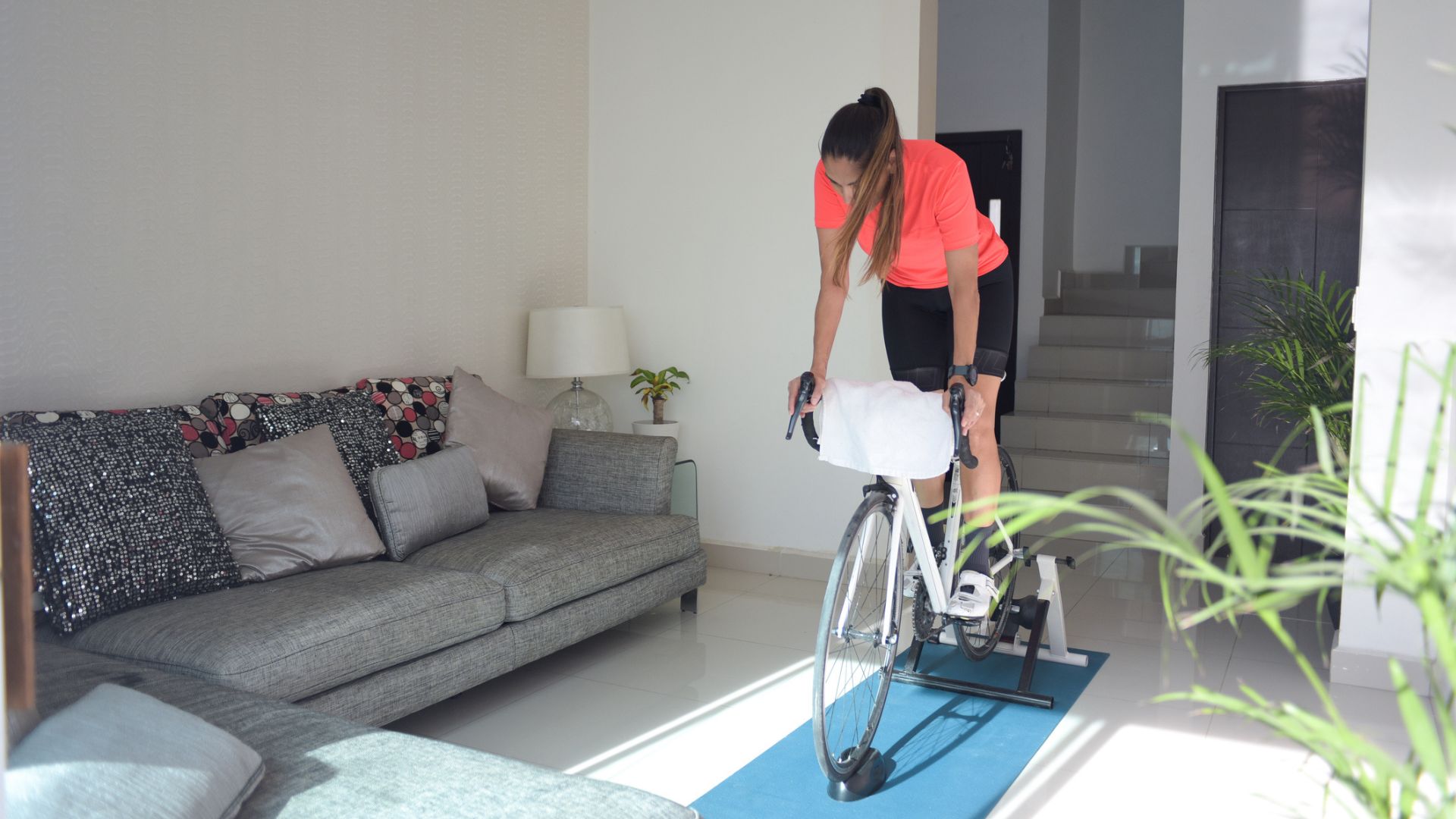
There are so many benefits of indoor cycling. Firstly, you can still enjoy a ride when the weather isn't on your side. Secondly, you might be able to tackle terrain you otherwise wouldn't have access to in your local area, and thirdly, you may be able to ride for longer than you normally would outdoors - given your unique access to the kitchen (for snacks and rehydration) and the bathroom.
While indoor cycling setups, also known as 'turbo trainers' can be expensive, you can pick a refurbished one up second hand from many certified websites or opt for a cheaper model - often in exchange for a noisier output.
Incorporate some strength training

Strength training is always a good idea - but if you're a cyclist, it's an essential. Not only can it help to prevent injuries by improving the strength of the tendons, core stability, and balance, but it can aid with strengthening areas commonly overused - such as a the lower back, neck, and knees.
You'll also find that you'll likely become a better cyclist if you incorporate some strength training as it can help you use more muscle fibres in every stroke of the pedal. This, in turn, can help you ride faster while still staying safely and securely on your bike.
Include some cross training in your routine

Strength training is a type of cross training - an exercise you can do to complement your primary sport, which is cycling in this case. Other examples of cross training can help boost your cardiovascular health, stamina, and endurance, while using different muscles to the ones used in cycling. In turn, this can help to prevent overuse of those muscles and tendons.
Good sports for cross training with cycling include yoga, Pilates, swimming, running, and any kind of weightlifting or resistance training activity.
Try cleats

Once you're comfortable on the bike and moving safely on the roads, you might decide to invest in some cleats. Cleats sit on the base of the cycling shoe and clip into a clipless pedal. To ride with them, you simply push the cleat into the pedal, a mechanism keeps your shoe in place, and then you can set off.
Shoes with cleats can improve your cycling as you transfer more energy onto the bike as you can now push the pedal down and pull it up.
However, they do take some getting used to - and you will fall off a few times before you get the hang of it. That's very normal so don't worry.
Do some hill training

Hill training is just one of the cycling exercises you can do to boost your cardiovascular health and give your body a challenge. As the name suggests, hill training is all about cycling up hills - something that many people try to avoid.
However, it's very useful as hills engage your glutes (buttocks), quads (thighs) and calves on the bike more so than on flat surfaces, which can help boost strength in these areas by breaking down muscle fibres, which then rebuild to become stronger. This new and improved strength can then be used to improve your cycling in other areas, including on flat surfaces and rocky terrains.
Look after your skin

Cycling can be tough on the skin. In the winter months, the cold air and reduced humidity makes skin dry while skin suffers in the heat and sunshine in the summer. So, remember to moisturise your face and exposed areas of the body - such as the hands, arms, and legs - regularly.
In the hotter months, be sure to wear light layers still for sun protection and plenty of sun cream.
Take a break

It's important to take a break when you're cycling - more so than with some other sports, since it's rare to be doing a sport for several hours (and sometimes whole days) at a time. If you're planning to be out all day or even doing a multi-day trip, be sure to stop regularly to refuel, rehydrate, and rest.
Taking a break can also help prevent painful saddle sores by giving the skin under your cycling kit a chance to breathe.
Sign up to an event

Once you're comfortable on your bike, you may want to challenge yourself with something new. An event could be this! There are plenty of cycling events that take place across the UK. While they aren't often free to sign up to, many offer a 'closed-roads' route, meaning you're free to cycle without having to worry about pedestrians stepping out into the roads or cars trying to move around you.
This is also a great way to meet other people in the cycling community.
Take your bike abroad
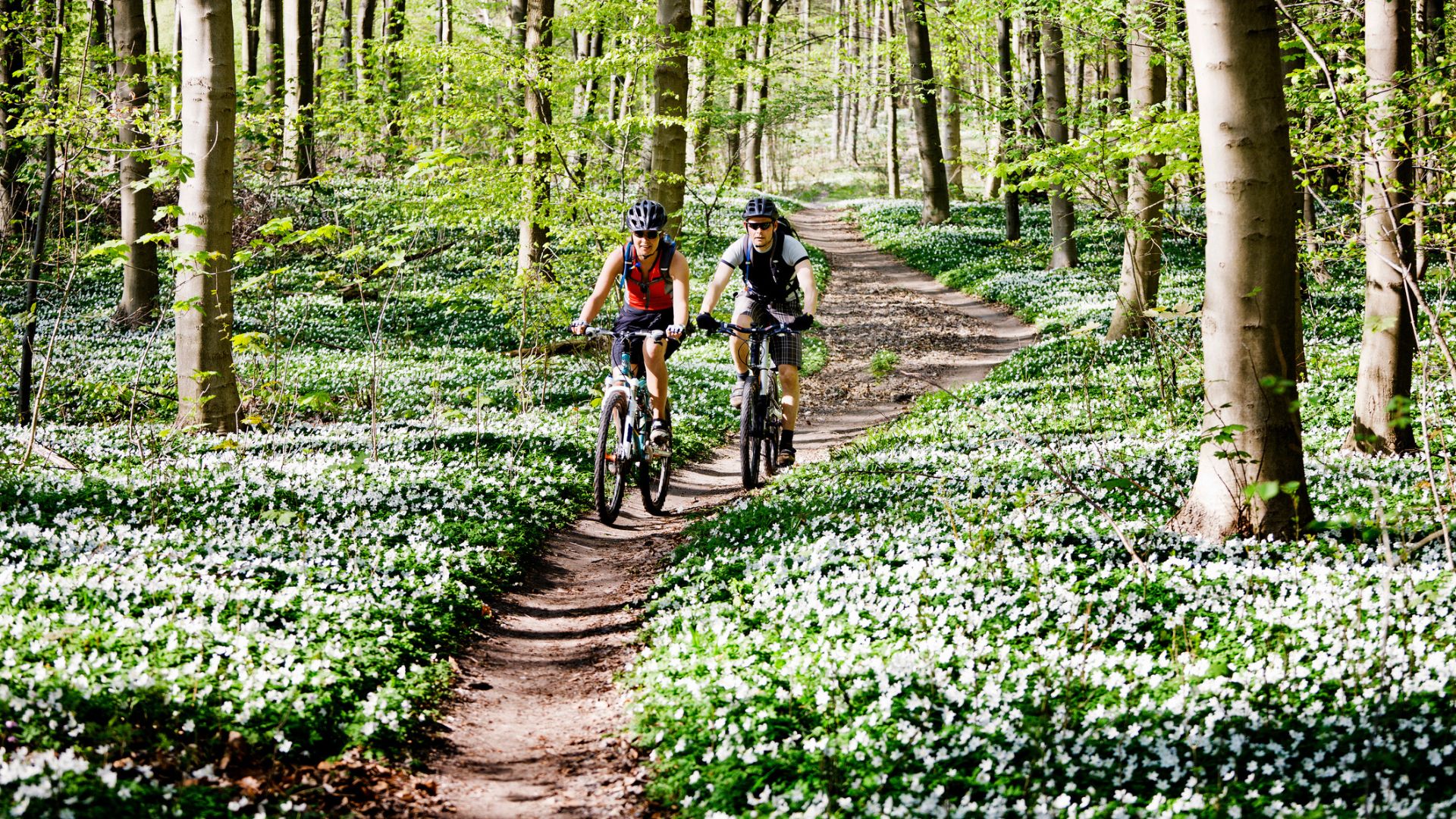
Cycling abroad has much to offer - from the natural wonders of Patagonia to the cyclist-friendly roads of Mallorca, packing your bike into your car or investing in a box to travel by plane with your bike can unfold a whole new world of possibilities.
However, there's a lot involved in taking your bike abroad - from the storage box to additional fees for travel - so why not plan a cycling holiday and rent one while you're there?

Grace Walsh is woman&home's Health Channel Editor, working across the areas of fitness, nutrition, sleep, mental health, relationships, and sex. She is also a qualified fitness instructor. In 2025, she will be taking on her third marathon in Brighton, completing her first ultra marathon, and qualifying as a certified personal trainer and nutrition coach.
A digital journalist with over seven years experience as a writer and editor for UK publications, Grace has covered (almost) everything in the world of health and wellbeing with bylines in Cosmopolitan, Red, The i Paper, GoodtoKnow, and more.
